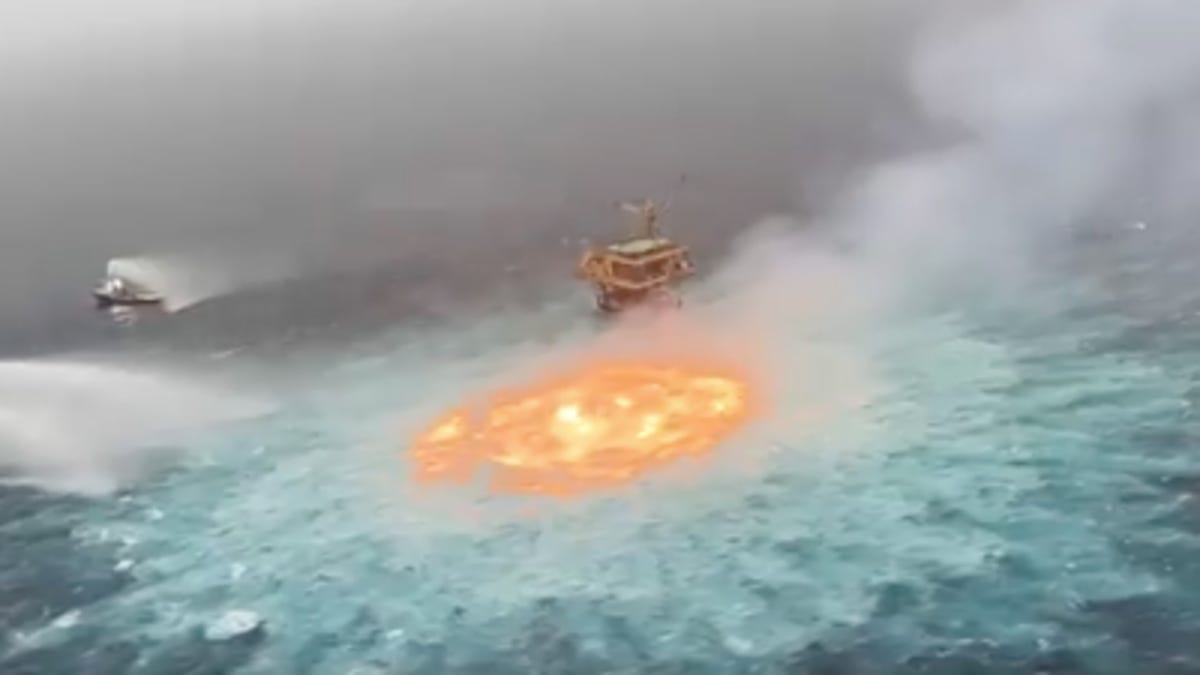'The ocean is on fire': Gas leak from underwater pipeline sees flames erupt in Gulf of Mexico
The fire has been extinguished, says Reuters.

Boats worked to put out flames in the Gulf of Mexico on Friday.
A gas leak from an underwater pipeline in the Gulf of Mexico led to a raging fire on the ocean's surface Friday, Reuters reported. The fire, which burned west of Mexico's Yucatán peninsula, was extinguished hours later, state oil company Pemex told the publication.
Twitter user Manuel Lopez San Martin shared videos of the fire, including a shot of boats working to put out the flames.
🚨 Incendio registrado en aguas del Golfo de México
— Manuel Lopez San Martin (@MLopezSanMartin) July 2, 2021
A 400 metros de la plataforma Ku-Charly (dentro del Activo Integral de Producción Ku Maloob Zaap)
Una válvula de una línea submarina habría reventado y provocado el incendio
Esta fuera de control hace 8 horas pic.twitter.com/KceOTDU1kX
🚨 Sobre el incendio registrado en aguas del Golfo de México, en la Sonda de Campeche, a unos metros de la plataforma Ku-Charly (dentro del Activo Integral de Producción Ku Maloob Zaap)
— Manuel Lopez San Martin (@MLopezSanMartin) July 2, 2021
Tres barcos han apoyado para sofocar las llamas pic.twitter.com/thIOl8PLQo
The fire started in an underwater pipeline connecting to a platform at Pemex's Ku Maloob Zaap oil development, people familiar with the matter told Reuters. Workers controlled the fire using nitrogen, one source said. Reportedly there were no injuries.
How can the ocean catch fire?
The powerful images zipping around social media are usually accompanied by the proclamation that the ocean is on fire. Not to go full Neil deGrasse Tyson here, but it's worth taking a look at how this might happen.
The fire itself is happening at the surface as Simon George, a professor of organic geochemistry at Macquarie University in Australia, explains. "The fire was caused by methane and probably other wet gas components (ethane, propane, etc.) igniting at the ocean surface after leaking from the pipeline," he told CNET via email.
He suggests there must have been a continuous enough stream of natural gas in the one place to sustain the fire and keep it churning, resulting in the wild images you can see above. And while a continuous flow of methane is problematic -- it's a greenhouse gas -- he notes that fire may have helped contain some of the damage.
"One good thing about the fire is that it consumed some of the leaking hydrocarbons," he said.
Reuters reports that company workers used nitrogen to control the fire.
An incident report shared with Reuters reportedly said, "The turbomachinery of Ku Maloob Zaap's active production facilities were affected by an electrical storm and heavy rains."
Pemex told Reuters it would investigate what led to the incident. Pemex didn't immediately respond to CNET's request for comment.



